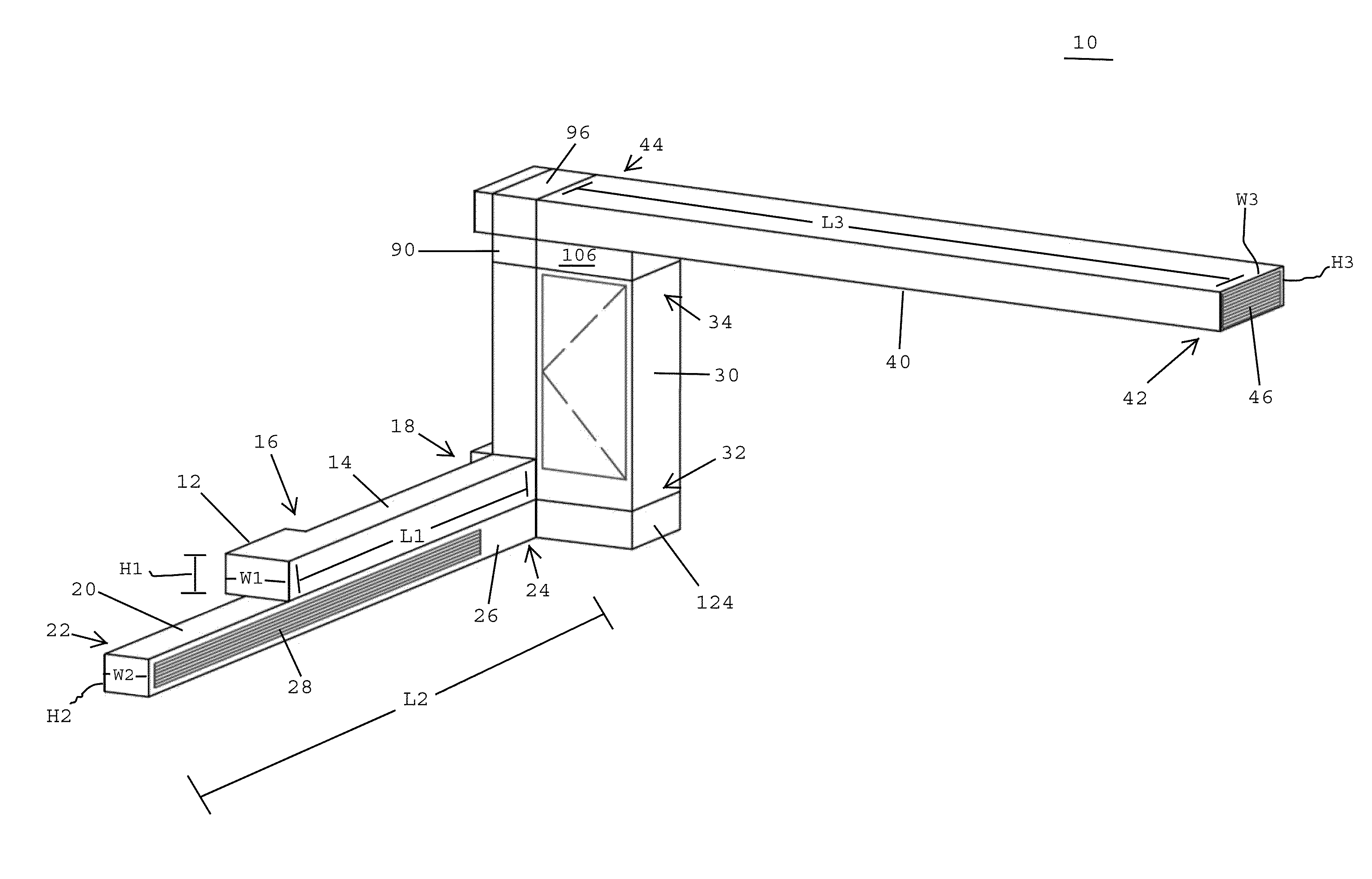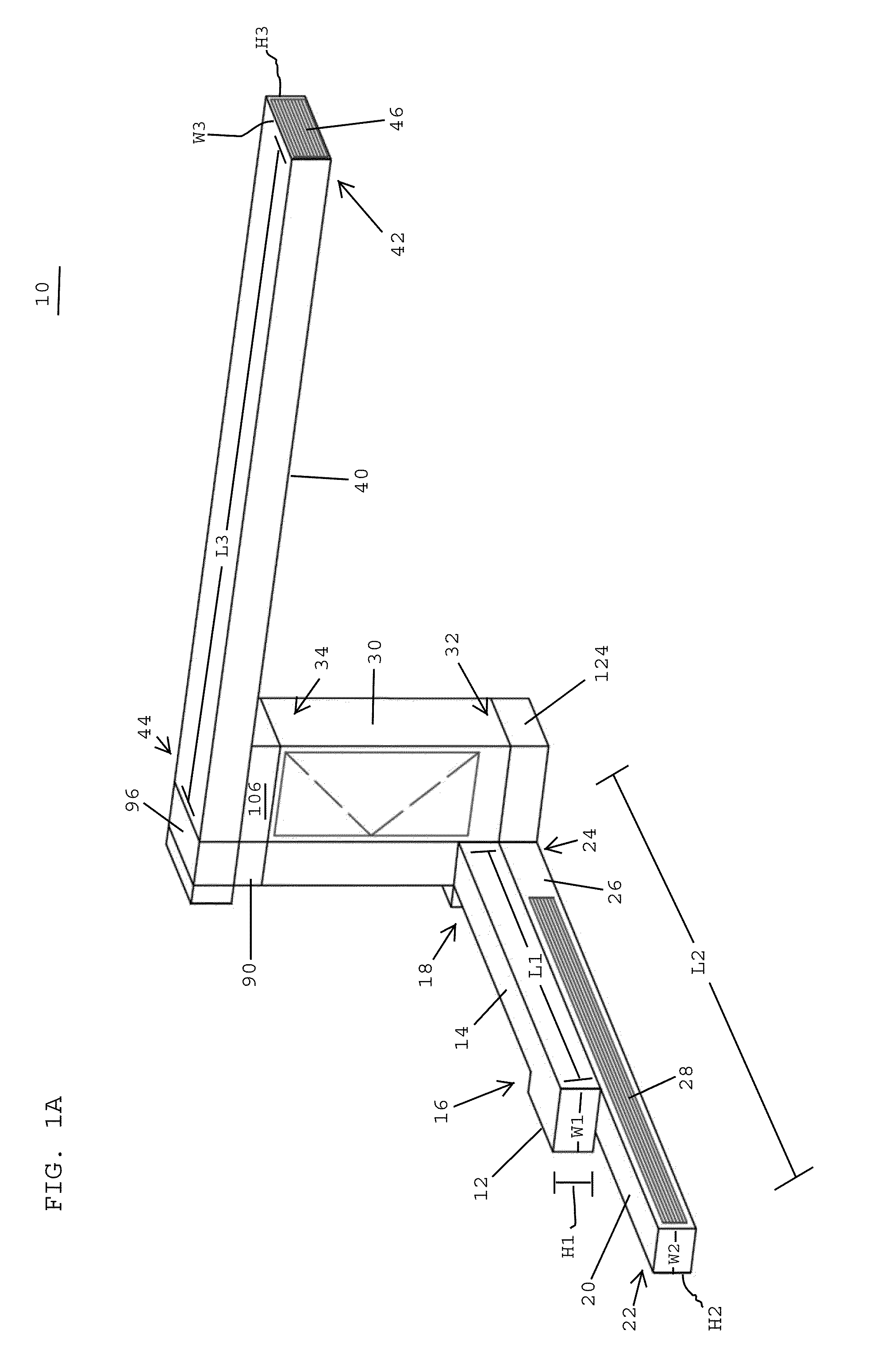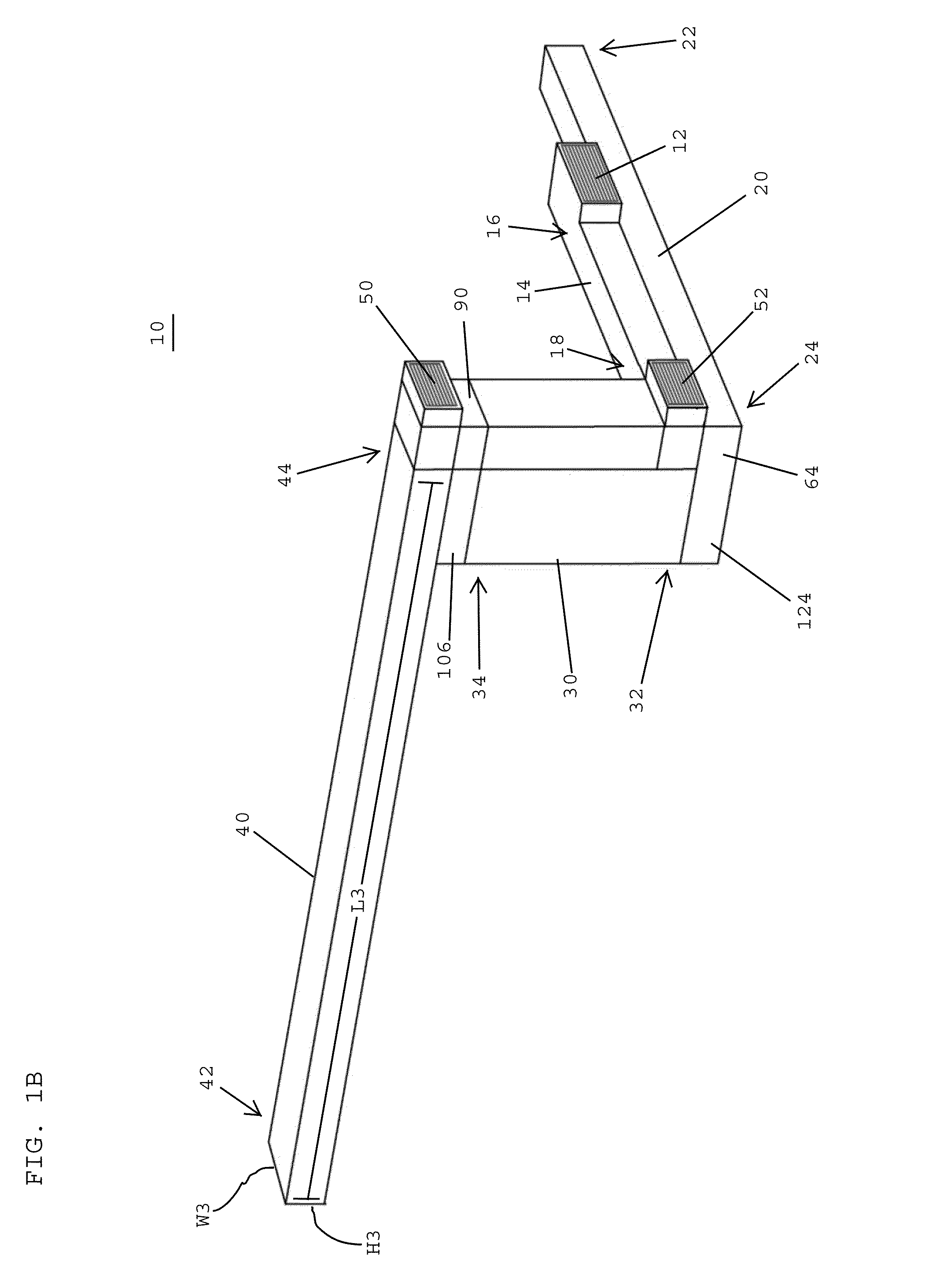[0009]In one embodiment, a displacement ventilation system provides a number of advantages over
conventional ventilation systems. First, the displacement ventilation system delivers greater volumes of
fresh air to the occupants of a room, minimizes
noise, minimizes energy use, and increases occupant comfort. In one embodiment, a displacement ventilation system produces healthier surroundings resulting in improved health, lower absentee rates, and better productivity for occupants.
[0010]Although the present invention is not limited by any particular theory of operation, it is believed that the quality of the air located within an enclosed space supplied by the displacement ventilation systems disclosed herein may be improved due to rising thermal plumes that carry contaminants and pollutants away from occupants and toward a ceiling exhaust. The vertically moving air patterns preferably inhibit the transfer of pollutants from one occupant to another. Thus, the displacement ventilation systems disclosed herein provide better
pollutant removal and enhanced
indoor air quality than may be achieved when using conventional systems such as mixed ventilation systems.
[0011]In one embodiment, a displacement ventilation system also provides improved
acoustics because air passing through the system flows at a
lower velocity than is found in
conventional ventilation systems. In particular, the low velocity of the air leaving a linear diffuser is relatively quiet compared to the noisy, in-rush of air often experienced when using mixed ventilation systems. As such, it is easier to satisfy building acoustic standards, and the systems will not have to be
shut down so that occupants can hear one another.
[0018]In one embodiment, the
heat exchanger preferably has an intake side having a
titanium oxide coating for neutralizing pollutants and an exhaust side having a
copper oxide coating for disinfecting microbes and improving
thermal energy transfer. In one embodiment, at least one of the ducts of the displacement ventilation system may be lined with an acoustic liner for minimizing
noise transmission.
[0021]In one embodiment, the
heat exchanger has a first flow path extending therethrough having a
titanium oxide coating for neutralizing pollutants and a second flow path extending therethrough having a
copper oxide coating for disinfecting microbes and improving
thermal energy transfer. In one embodiment, the air flow through the system is adjustable upon initial installation and / or after installation to maximize the efficiency of
heat transfer in response to climate conditions. In one embodiment, the system is adjustable, such as by using dampers, so that the outside air is directable into one of the first and second flow paths depending upon outside air temperatures with the return air being directed into the other one of the flow first and second flow paths.
[0026]In one embodiment, a displacement ventilation system saves energy costs. In temperate environments, there are thousands of hours annually when the outside temperature is between 55-65° Fahrenheit, which greatly increases the potential for
free cooling of enclosed spaces. The higher inlet air temperatures (e.g. 55-65° Fahrenheit) also increases the efficiency of mechanical cooling equipment because less “lift” or work is required by a compressor to raise the
refrigerant pressure and temperature before it reaches the condenser. In addition, because the air near the ceiling is warmer when it is exhausted, the displacement ventilation systems of the present invention reduce
cooling coil loads. Much of the heat in the upper part of an enclosed space never enters the occupied zone and thus does not have to be removed by the cooling system. All of the above described benefits contribute to energy savings.
 Login to View More
Login to View More  Login to View More
Login to View More 


